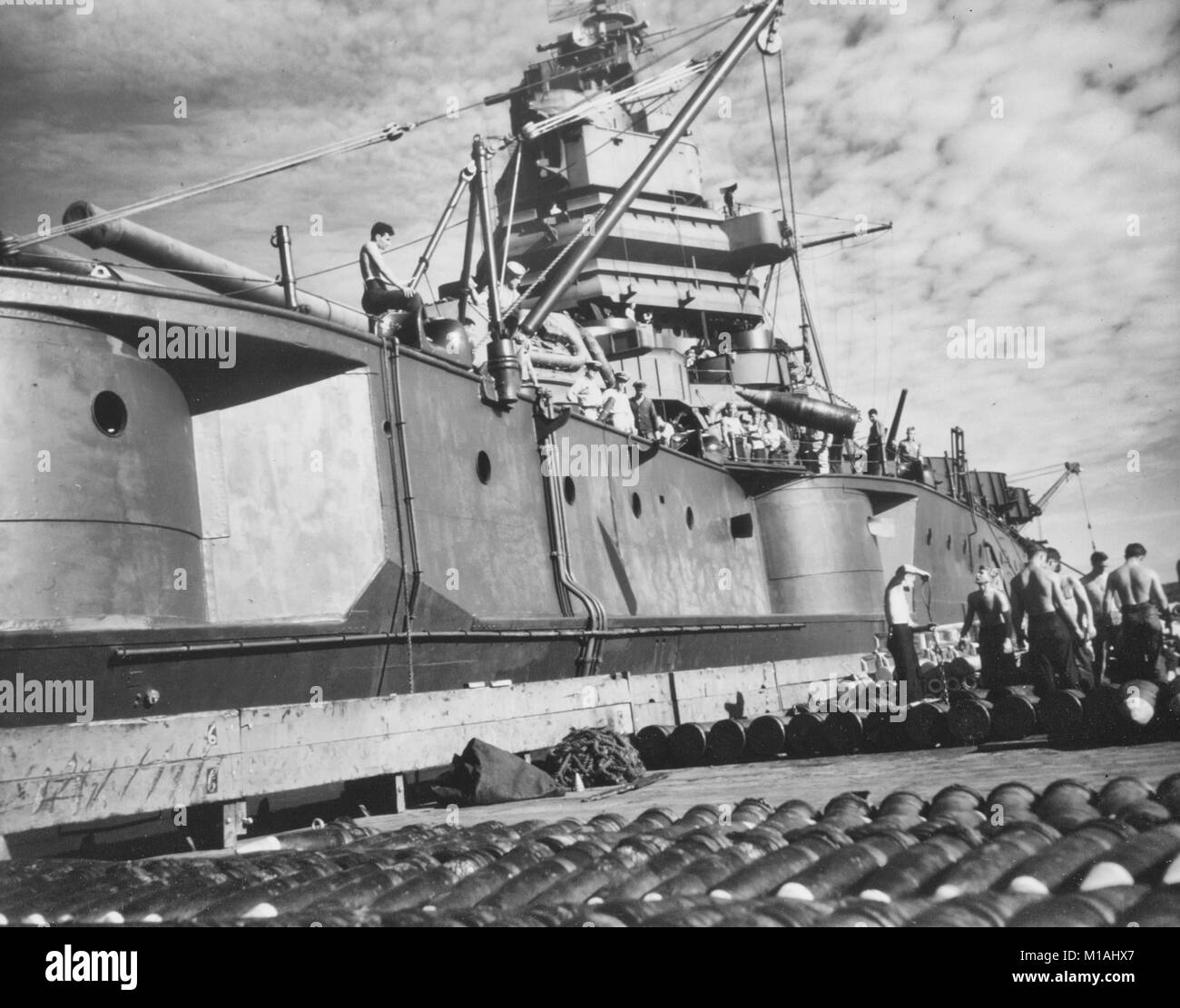New Mexico Battleship - 2" STS + 1.75" STS + 1.75" NS = 4.2" (51mm STS + 44mm STS + 44mm NS = 107mm) Armor Deck
2" STS + 1" STS + 0.5"/1.5" STS + 0.5" MS = 3.1"/3.9" (51mm STS + 25mm STS + 13mm/38mm STS + 13mm MS = 79mm/99mm) Shard Deck
New Mexico Battleship

The 19' (5.8m) underwater protection consists of a 0.25" (6mm) water retaining bulkhead, internal 1.5"+1.5" (38mm+38mm) STS torpedo bulkhead, external 0.75" (19mm) STS torpedo bay walls and bubbles. The system is designed to withstand 300 pounds (136 kg) of explosives.
Oldest Us Naval Ships
Late 1944: AA battery upgraded to 6 5"/51 guns, 10x4 40mm guns and 40 to 46 20mm guns.
1945: Mississippi was upgraded to 16 5"/25, 12x4 40mm, and 40 20mm guns, with the conning tower removed to compensate.
USS New Mexico was completed in 1918. A proposal to build a third tier of "standard battleships", similar to the Pennsylvania, a 16-inch (406 mm) heavy gun frigate, was rejected by the Secretary of the Navy as too expensive. The new ships are better seafarers, with clipper bows and subbatteries higher up in the superstructure, and an improved substructure. Their triple turrets are constructed entirely of flat plates with separate slides so hitting a single gun won't knock out all three. The gun was a more powerful 14"/50 model than the 14"/45 gun on earlier ships.
In 1930, the ships were modernized with anti-aircraft batteries, massive bridge structures, better endurance and a small amount of additional deck armour. The deck armor is believed to be resistant to a 1,600 lb (726 kg) bomb dropped from an altitude of 6,000 ft (1,830 m). The fort guns were dismantled and the forts galvanized.
Real Photo Postcard Rppc U.s.s Battleship New Mexico Navy 1926
The New Mexicans, stationed in the Atlantic at the time of Pearl Harbor, were hastily refitted with additional anti-aircraft guns and rushed to the Pacific to form the backbone of a new front. This prevented any further modernization except the installation of a large number of additional anti-aircraft weapons. Only the USS Idaho ever received the outstanding 5"/38 gun. The USS New Mexico (BB-40) was a battleship that served in the US Navy from 1918 to 1946. She was the capital of three battleships and a ship named for the 1st State of New Mexico. Her keel was laid by the New York Naval Laid down at the shipyard on October 14, 1915, she was launched on April 23, 1917, and commissioned on May 20, 1918. New Mexico was a US Navy state-of-the-art battleship and the first battleship to be equipped with turbo-electric drive, giving her a top speed of 21 knots. (39 km/h; 24 mph) top speed.She has repeatedly achieved gun speed during naval exercises.Awards in art, engineering and war prowess have earned her the honorary title of "Captain of the Fleet".
Shortly after completing initial training, New Mexico sent the ship carrying President Woodrow Wilson to Brest, France to sign the Treaty of Versailles. Since then he has been the first flagship of the newly formed United States Pacific Fleet. The interwar period was marked by repeated maneuvers with the Pacific and Atlantic fleets, the test ship used as a PID controller, and a major modernization between March 1931 and January 1933. During World War II, New Mexico's first mission was a neutrality patrol in the Atlantic Ocean, after the Japanese attack on Pearl Harbor, she returned to the Pacific Ocean and carried out the Marianas operations in Attu and Kiska, Tarawa, the Marshall Islands, the islands, and the coastal bombardment of Palau, Leyte, Luzon, and Okinawa. The attack included; These were interspersed with escort missions, patrols and refits. The ship was repeatedly attacked by kamikazes. USS New Mexico was awarded six battle stars for her service in the Pacific campaign and remained in Tokyo Bay when Japan formally surrendered on September 2, 1945. Four days later, he sailed for the United States and arrived in Boston on October 17.
USS New Mexico was decommissioned at Boston on July 19, 1946, and struck from the ships' Naval Register on February 25, 1947. In November 1947, she was sold to the Lipset division of Luria Brothers for scrapping, but efforts to take her to Newark, New Jersey for scrapping were resisted by city officials. City fireboats were dispatched to block the passage of the warship and tugboat USS Lipsett, but the US Coast Guard announced a safe passage. The Undersecretary of the Navy was tasked with debilitating what the media began calling the "Battle of Newark Bay"; The city agreed to scrap the New Mexico and two other warships before ceasing operations in Newark Bay, but Lipsett was directed to dismantle the ships. within the specified time frame or suffer financial loss. Dismantling began in November and was completed in July 1948.

New Mexico was 624 feet (190 meters) long overall with a beam of 97 feet 5 inches (29.69 meters) and a beam of 30 feet (9.1 meters). She was designed to 32,000 long tons (32,514 t), and fully loaded to 33,000 long tons (33,530 t). Unlike the rest of her class, New Mexico was powered by four-shaft General Electric steam turbines with turbine-electric drives and nine oil-fired Babcock and Wilcox boilers rated at 27,500 shaft horsepower (20,500 kilowatts), a continuously increasing maximum speed. 21 knots (39 km/h; 24 mph). The vessel has a range of 8,000 nautical miles (15,000 km; 9,200 mi) at 10 knots (19 km/h; 12 mph). Her staff numbered 1,084 officers and M. As built, she was fitted with two lattice masts and main gun turrets with locating tops. The main armor belt was 13.5 inches (343 mm) thick, while the main armor deck was 3.5 inches (89 mm) thick. The turrets of the main gun turrets were 18 inches (457 mm) thick and the turrets 13 inches (330 mm) thick. The coning tower has 16 in (406 mm) thick sides.
New Mexico (battleship No. 40)
The ship's four triple-gun turrets were armed with a main battery consisting of twelve 14" (356 mm)/50 caliber guns, concentrated in two super-fire pairs mounted forward and aft of the superstructure. Unlike earlier triple-turret American battleships, these turrets were true triple-barrels, because Each barrel could be raised and lowered independently. The secondary battery consisted of four 5" (127 mm)/51 caliber guns mounted in separate batteries. Initially, the ship had 22 guns, but experience in the North Sea during World War I showed that the additional guns placed in the hull were useless in all but calm seas. As a result, the guns were removed and the forts were lined to prevent flooding. The secondary battery was armed with four 3" (76 mm)/50 caliber guns. In addition to her cannon armor, New Mexico had two 21-inch (530 mm) torpedo tubes mounted in the hull, one on each side.
On June 30, 1914, New Mexico was authorized by the US Congress. Originally, New Mexico was to be named California, but she had an accident during construction.
Construction of the new ship began on October 14, 1915, when her keel was laid at the New York Navy Yard. She was launched on 13 April 1917 and commissioned into the fleet on 20 May 1918.
The ship has begun sea trials and trials before officially joining the Atlantic Fleet. She was transferred to Boston in September. He performed at the Navy Parade in New York City on December 26. On January 15, 1919, he took the passenger ship George Washington to France for the Versailles Peace Conference, leaving the United States. On February 22, New Mexico sank a sunken schooner; After taking off Wreck's crew, New Mexico's second battery used the ship for target practice. On 27 February, the ship arrived in New York and in mid-July she moved to Hampton Roads, Virginia. On 16 July, she became flagship of the Pacific Fleet. Three days later, they left for California, passing through the Panama Canal and arriving in San Pedro on August 9.
Battleship Rock, Jemez, New Mexico By Mdj635
The next 12 years involved training drills and exercises in the Pacific and Caribbean and Pacific and Atlantic fleets. They traveled several times to South American ports and were used in the early development of the PID controller. These devices were invited by the Russian-American engineer Nicholas Minorsky to be used for the automatic driving of ships and have since been widely used in control engineering.
Following New Mexico's training exercises in the Atlantic and Pacific from March 1931 to January 1933, she was overhauled and modernized by the Navy in Philadelphia Harbor. The overhaul included replacing her turbine electric drive with more conventional geared turbines, manufactured by Curtiss. In addition, New Mexico received eight 5"/25 caliber anti-aircraft guns, replacing the four 3"/50 caliber anti-aircraft guns previously installed. After the overhaul, she returned to the Pacific to continue training exercises and development of tactical operations.
New Mexico received numerous awards for its performance in these maneuvers, particularly in gunnery, engineering, and on the battlefield.

Battleship new jersey museum and memorial, battleship new jersey tour, battleship new mexico, new mexico, battleship new jersey camden nj, new battleship, battleship new jersey, uss new jersey battleship, battleship rock new mexico, new mexico class battleship, battleship new jersey museum, the battleship new jersey
0 Comments